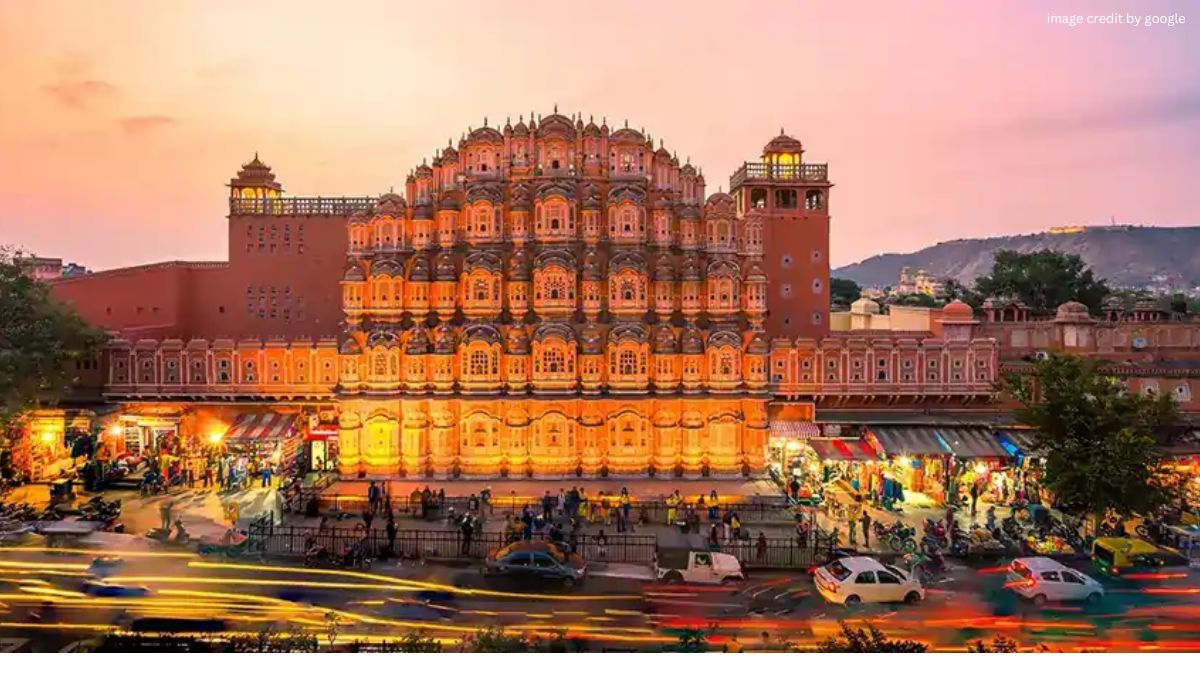Jaipur, the vibrant capital of Rajasthan, is a cultural treasure trove steeped in history, royal heritage, and architectural brilliance. Nicknamed the “Pink City”, Jaipur attracts travelers from around the globe with its magnificent forts, intricately designed palaces, bustling bazaars, and age-old traditions.
Here is a comprehensive guide to the best places to visit in Jaipur, crafted to provide the most in-depth insight into each destination.
1. Amber Fort – A Majestic Legacy of Rajput Grandeur
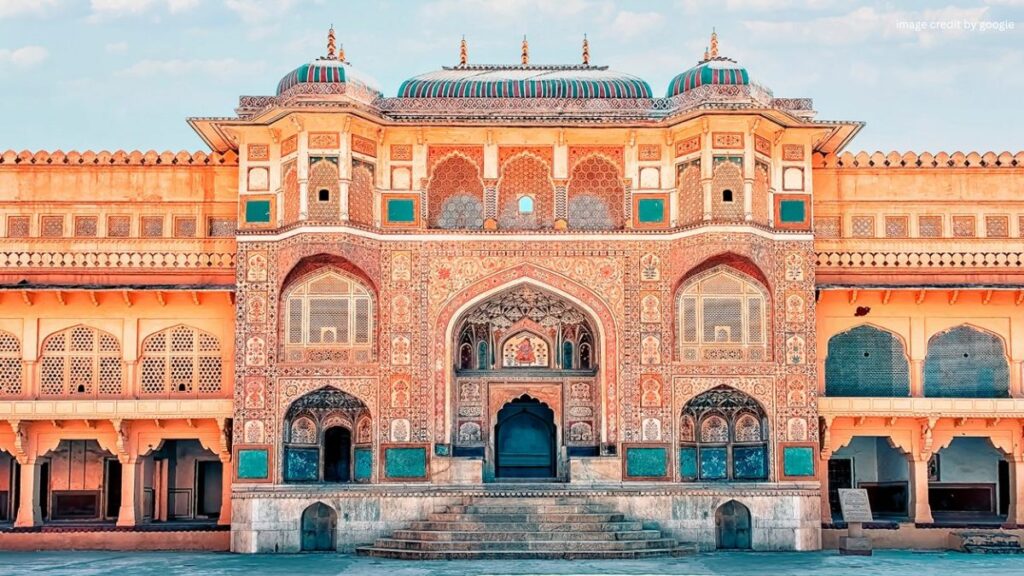
Located just 11 km from the city center, Amber Fort (Amer Fort) is one of the most iconic tourist attractions in Jaipur. Constructed with red sandstone and marble, this UNESCO World Heritage Site stands as a testament to Rajputana architecture and military might.
Visitors can explore the Sheesh Mahal (Mirror Palace), Diwan-i-Aam (Hall of Public Audience), and Ganesh Pol, a richly decorated gateway. Elephant rides up to the fort’s entrance and light & sound shows in the evening add to the majestic experience.
2. City Palace – The Heart of Royal Jaipur

Situated in the core of the Old City, the City Palace is a stunning blend of Mughal and Rajput architecture. The palace complex houses a series of courtyards, gardens, and buildings that showcase the grandeur of the royal family.
Key highlights include the Chandra Mahal, Mubarak Mahal, and the Diwan-i-Khas, which contains two massive silver urns listed in the Guinness World Records. The museum inside displays royal costumes, artifacts, and weaponry, providing a rich cultural immersion.
Best Places To Visit in May In India
3. Hawa Mahal – The Iconic “Palace of Winds”
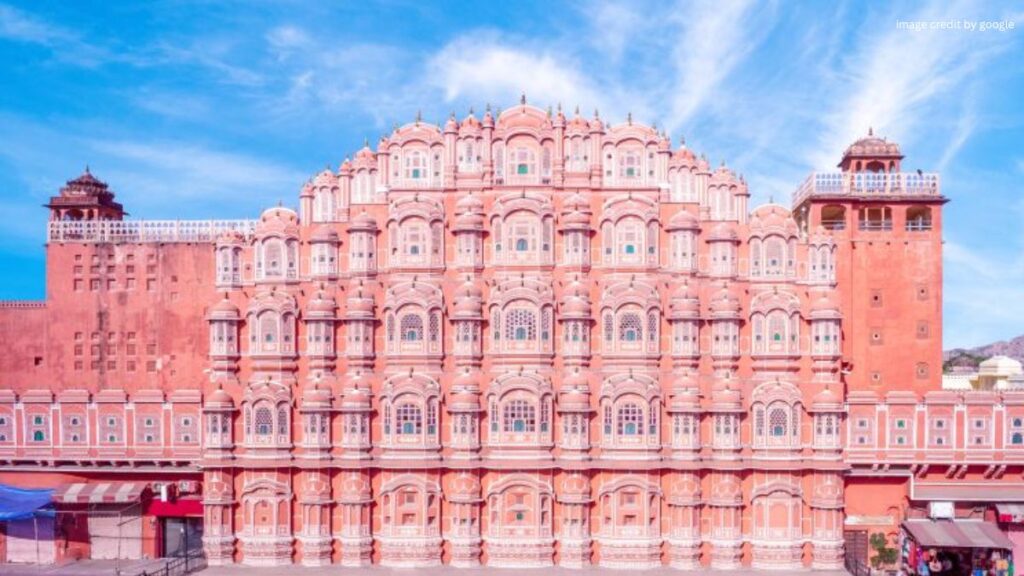
One of Jaipur’s most photographed landmarks, the Hawa Mahal is a five-storied pink sandstone structure constructed in 1799 by Maharaja Sawai Pratap Singh. Designed for royal ladies to observe street festivals without being seen, it features 953 intricately latticed windows or ‘jharokhas’.
Visitors can climb to the top for sweeping views of the City Palace and Jantar Mantar, with cool breezes flowing through its honeycomb windows—a literal “Palace of Winds.”
Best Honeymoon Destinations for an Unforgettable Romantic Getaway
4. Jantar Mantar – Ancient Observatory of Scientific Marvels
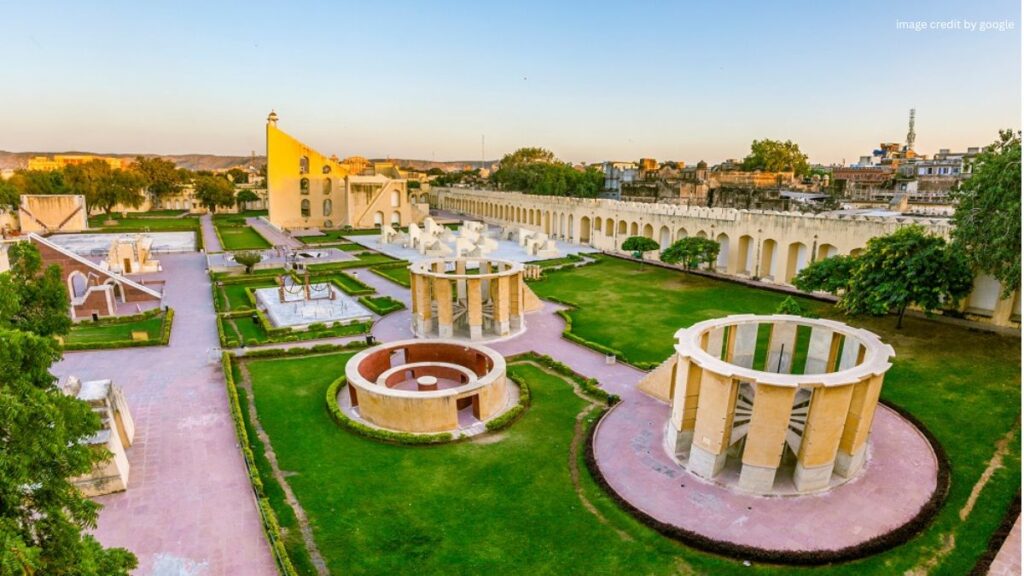
Adjacent to the City Palace, Jantar Mantar is a UNESCO World Heritage Site and one of the largest stone observatories in the world. Built by Maharaja Jai Singh II in the 18th century, this astronomical complex contains 19 instruments used for measuring time, predicting eclipses, and observing planetary positions.
The Samrat Yantra, the world’s largest sundial, is a marvel of astronomical precision and engineering, attracting scientists and tourists alike.
5. Jal Mahal – The Mesmerizing Water Palace
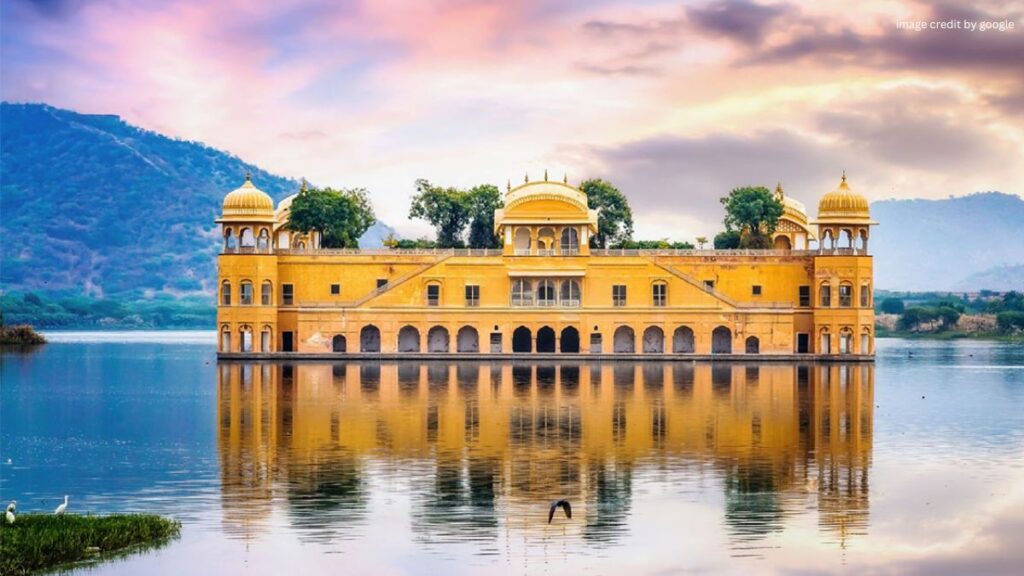
Floating serenely in the middle of Man Sagar Lake, Jal Mahal is a spectacular example of Rajput architecture. Though the palace is not open for public tours inside, the view from the banks and boat rides offer a magical panoramic vista, especially during sunrise and sunset.
Surrounded by the Aravalli Hills and often visited by migratory birds, Jal Mahal is a must-stop for photographers and nature lovers.
6. Nahargarh Fort – Scenic Sunsets and City Views
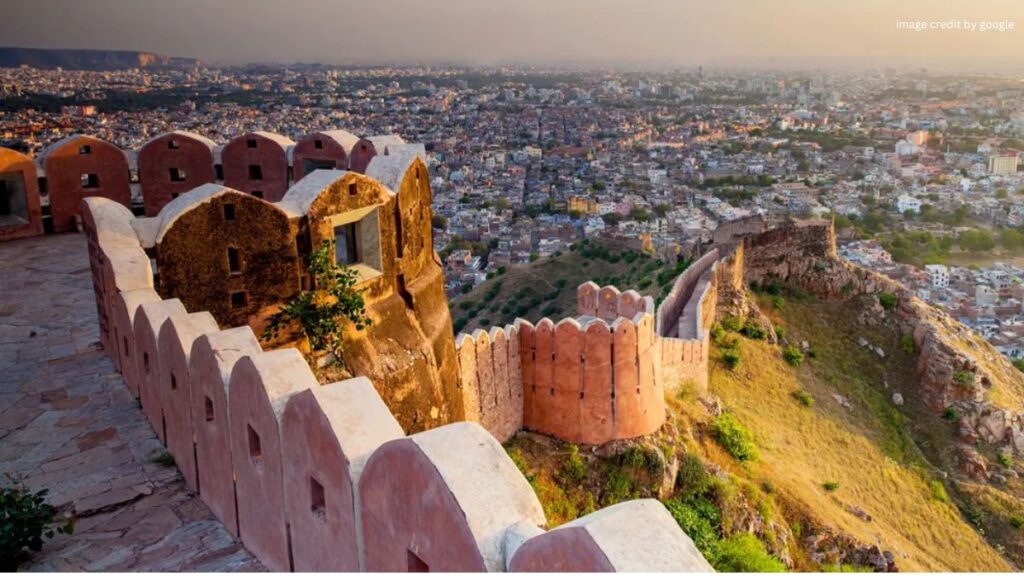
Perched atop the rugged Aravalli hills Nahargarh Fort offers the best panoramic view of Jaipur city, particularly at sunset. Originally built as a defense fort, its intricate architecture and serene surroundings have turned it into a popular tourist and picnic spot.
Inside, the Madhavendra Bhawan consists of several royal suites designed with identical layouts and connected by corridors. Cafés and rooftop eateries now operate within the fort, adding a modern twist to this historic site.
7. Jaigarh Fort – Home of the World’s Largest Cannon
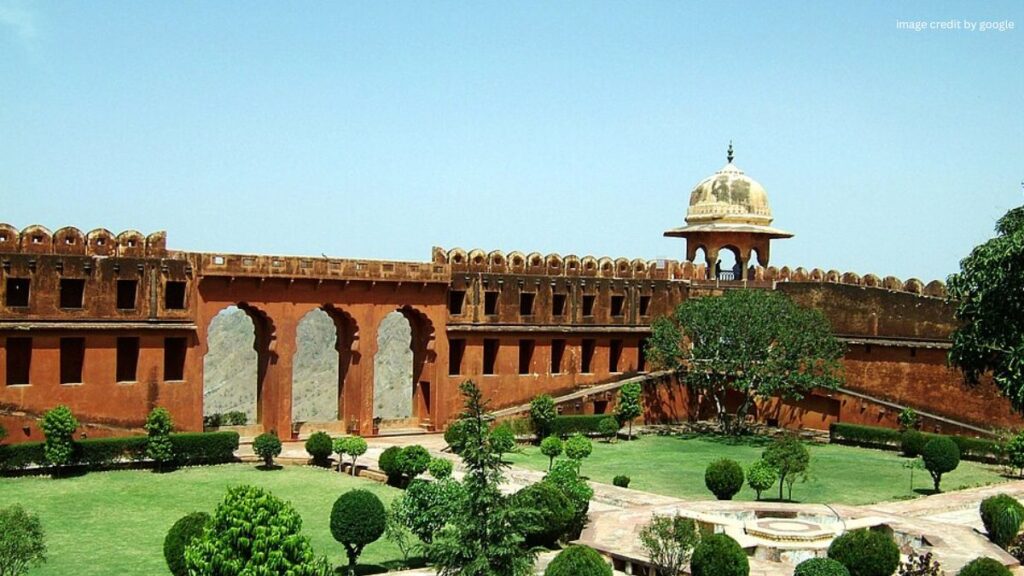
Known as the Fort of Victory, Jaigarh Fort is situated on the same hill range as Amber Fort and connected via subterranean passages. It is famed for housing the Jaivana Cannon, once the world’s largest cannon on wheels.
The fort also offers stunning views of the Amber Fort and surrounding landscape. With a museum displaying artifacts, armory, and royal photographs, Jaigarh is a well-preserved symbol of Rajput valor.
8. Albert Hall Museum – A Repository of Rajasthan’s History

Set amidst the lush Ram Niwas Garden, the Albert Hall Museum is the oldest museum in Rajasthan. Designed by Sir Samuel Swinton Jacob, it exhibits paintings, carpets, ivory, stone, metal sculptures, and a rare Egyptian mummy.
The museum glows beautifully at night and is a cultural landmark that gives insight into the heritage of Jaipur and Rajasthan at large.
Best Honeymoon Destinations for an Unforgettable Romantic Getaway
9. Birla Mandir – A Temple of Peace and Purity

Dedicated to Lord Vishnu and Goddess Lakshmi, the Birla Mandir is a modern architectural marvel made entirely from white marble. Its serene ambiance, intricate carvings, and panoramic view of Jaipur make it a peaceful retreat for pilgrims and tourists.
Stained glass windows, sculpted scenes from Hindu scriptures, and beautifully manicured gardens add to its spiritual and visual appeal.
10. Jaipur Bazaars – A Shopper’s Paradise
No visit to Jaipur is complete without a stroll through its bustling markets. Each market has a unique charm:
- Johari Bazaar – Famous for gemstones and traditional Rajasthani jewelry.
- Bapu Bazaar – The go-to place for Jaipuri textiles, quilts, and handicrafts.
- Tripolia Bazaar – Known for lac jewelry, brassware, and carpets.
- Chandpole Bazaar – Ideal for marble carvings and wooden artifacts.
Shopping here is not just about buying—it’s about experiencing the vibrant colors, rich culture, and craftsmanship of Jaipur.
11. Galtaji Temple – The Monkey Temple of Jaipur
Located about 10 km from Jaipur, Galtaji Temple is a spiritual and architectural gem nestled in the Aravalli Hills. It features natural freshwater springs and seven sacred water tanks (kunds), where devotees take a holy dip.
Dedicated to the Hindu sage Galav, the temple complex is also home to a large troop of monkeys, earning it the nickname “Monkey Temple.”
12. Sisodia Rani Garden – A Symbol of Royal Love
Constructed in 1728 by Maharaja Sawai Jai Singh II for his queen Sisodia, this beautiful garden lies on the Jaipur-Agra road. Layered with multi-tiered gardens, fountains, pavilions, and painted pavilions depicting Radha-Krishna stories, it offers a romantic and tranquil ambiance.
It’s an ideal destination for couples, nature lovers, and photographers seeking a peaceful escape from the city’s hustle.
13. Chokhi Dhani – A Rajasthani Cultural Village Experience
For those who want to experience authentic Rajasthani village life, Chokhi Dhani is the place to be. This resort-style ethnic village offers folk performances, traditional food, camel rides, puppet shows, and more.
It provides a holistic cultural immersion, making it a top pick for families and tourists seeking a taste of Rajasthan’s traditions.
14. Panna Meena ka Kund – Jaipur’s Hidden Stepwell Gem
Nestled near the Amber Fort, Panna Meena ka Kund is an 8-story ancient stepwell constructed in the 16th century. The symmetrical, zigzag staircases and traditional design make it one of the most picturesque and underrated architectural marvels in Jaipur.
The stepwell was historically used for water storage and community gatherings. It’s an ideal place for photography enthusiasts and those seeking serenity away from the tourist crowds.
15. Anokhi Museum of Hand Printing – A Tribute to Traditional Craft
Located near Amber Fort, this museum is dedicated to preserving and showcasing the traditional art of hand block printing. Housed in a restored haveli, the Anokhi Museum of Hand Printing features beautiful textile exhibits, printing tools, and live demonstrations.
Visitors can learn about the meticulous process of making hand-printed fabrics and even try their hand at it. It’s a must-visit for those interested in fashion, textiles, and traditional Rajasthani craftsmanship.
16. Kanak Vrindavan Garden – Tranquility Amidst Aravallis
Situated en route to Amber Fort, Kanak Vrindavan Garden is a landscaped garden nestled in a scenic valley surrounded by hills. Built in the style of Vrindavan gardens in Mathura, it’s adorned with fountains, marble decorations, and intricate carvings.
This garden was once used by royals for leisure and rituals. With its calm surroundings and temple architecture, it’s a perfect stop for relaxation and photography.
17. Central Park – A Breath of Fresh Air in the City
Located in the heart of Jaipur, Central Park is the largest green space in the city. It features a 2.5-km-long jogging track, lush lawns, a musical fountain, and a 206-foot-high national flag, one of the tallest in India.
Locals and tourists come here to relax, exercise, or enjoy a picnic, making it a great spot for a morning stroll or evening escape from city noise.
18. Garh Ganesh Temple – Divine Views and Spiritual Vibes
Perched atop the Aravalli Hills near Nahargarh Fort, the Garh Ganesh Temple offers stunning panoramic views of Jaipur. Dedicated to Lord Ganesha, the temple holds special significance as it depicts Ganesha in his child form.
Visitors must climb a steep set of stairs, but the reward is both spiritual and visual. It is especially popular during the Ganesh Chaturthi festival.
19. Raj Mandir Cinema – The Pride of Jaipur’s Entertainment
A trip to Jaipur is incomplete without experiencing a movie at the Raj Mandir Cinema, often dubbed the most beautiful cinema in India. With its grand meringue-shaped architecture, opulent interiors, and royal ambiance, watching a Bollywood film here is an experience in itself.
More than just a movie theater, Raj Mandir is a symbol of Jaipur’s flair for elegance and hospitality.
20. Akshardham Temple – A Blend of Modernity and Spirituality
Though lesser-known compared to its Delhi counterpart, Jaipur’s Akshardham Temple is a modern architectural marvel dedicated to Lord Narayan. Its clean, serene environment, beautifully carved idols, and spiritual atmosphere make it a peaceful retreat.
It’s a must-visit for those seeking spiritual solace, and the temple’s well-maintained gardens add to its peaceful ambiance.
21. Statue Circle – A Tribute to Royal Legacy
Statue Circle is a famous historical landmark situated in the heart of Jaipur. It is dedicated to Maharaja Sawai Jai Singh II, the founder of Jaipur. The white marble statue, surrounded by decorative lights and fountains, makes it a favorite spot for evening hangouts.
It’s a scenic stopover, especially in the evening, when locals and tourists gather to enjoy street food and capture stunning photographs.
22. Ram Niwas Garden – Victorian Elegance in Jaipur
Spread over a vast area, Ram Niwas Garden is a historical garden complex that houses the Albert Hall Museum, a zoo, a bird park, and several fountains. It was built in 1868 by Maharaja Sawai Ram Singh.
The lush greenery, heritage buildings, and recreational zones make it a perfect destination for family outings and peaceful walks.
23. Moti Dungri Ganesh Temple – The Protector Deity of Jaipur
Located near Birla Mandir, the Moti Dungri Ganesh Temple is a revered shrine dedicated to Lord Ganesha. Believed to be over 250 years old, it’s visited by thousands of devotees daily.
The temple is especially crowded on Wednesdays and during the Ganesh Chaturthi festival, when spiritual energy fills the air.
24. Jawahar Circle – Asia’s Largest Circular Park
Famous for its musical fountains and well-manicured rose gardens, Jawahar Circle Garden is a unique circular garden located near Jaipur International Airport. The entrance, styled like a royal Rajasthani gate, is an attraction in itself.
It’s a popular place for locals to jog, walk, and relax. The musical fountain show at night is a big hit with families and children.
25. Sargasuli Tower – Jaipur’s Isolated Minaret of Victory
Also known as the Isar Lat, this seven-story minaret was built in 1749 to commemorate a military victory. Rising above the city, Sargasuli Tower offers one of the best aerial views of Jaipur’s skyline.
Climbing the narrow spiral staircase to the top is a bit of a challenge but rewards visitors with panoramic cityscapes and photo opportunities.
26. Gatore Ki Chhatriyan – Royal Cenotaphs of Jaipur
Tucked beneath the Nahargarh Fort, Gatore Ki Chhatriyan is a quiet and beautifully designed royal crematorium for the Kachwaha Rajput kings of Jaipur. The marble cenotaphs with intricately carved pillars and domes reflect Rajasthani craftsmanship at its best.
The site remains peaceful and less crowded, ideal for those seeking a moment of solitude amidst grandeur.
27. Patrika Gate – Jaipur’s Most Instagrammed Spot
Located at the entrance of Jawahar Circle, Patrika Gate is a visual feast of vibrant murals, traditional motifs, and Rajasthani art that narrate stories of Jaipur’s culture and heritage. The symmetrical corridor and kaleidoscope of colors make it one of the most photogenic landmarks in India.
It’s a must-visit for photography lovers and social media enthusiasts.
28. Bairat – The Ashokan Connection
Located around 86 km from Jaipur, Bairat (Virat Nagar) holds great historical and archaeological significance. It is home to the remains of a Buddhist monastery and an Ashokan-era stupa, considered among the oldest freestanding Buddhist structures in India.
Bairat is perfect for history lovers and offbeat explorers looking to uncover ancient Buddhist roots in Rajasthan.
29. Chandlai Lake – A Birdwatcher’s Retreat
Located about 30 km from the city center, Chandlai Lake is a tranquil freshwater body that serves as a paradise for migratory birds like flamingos and pelicans during the winter months.
Perfect for a quick getaway, this serene lake is a hidden gem for bird watchers, photographers, and nature lovers seeking a peaceful experience away from the city’s buzz.
30. Samode Palace – Regal Luxury Near Jaipur
Around 40 km from Jaipur lies the Samode Palace, a lavish 475-year-old Indo-Saracenic heritage structure. Once a royal residence, it has now been transformed into a luxury hotel that still retains its old-world charm.
Visitors are welcome to explore its beautifully painted Durbar Hall, mirror work, and royal courtyards. Even if you don’t stay overnight, a day trip to Samode is worth it for the architecture and royal ambiance.
31. Sisodia Rani Ka Bagh – Gardens of Love and Legacy
Though already mentioned earlier, Sisodia Rani Garden deserves special attention for its mythological murals, multi-layered gardens, and romantic origin story. Located on the Jaipur-Agra highway, it was built as a token of love by Maharaja Sawai Jai Singh II for his queen.
The garden features water channels, fountains, and pavilions amidst lush surroundings—a perfect escape for couples and peace seekers.
32. Khole Ke Hanuman Ji Temple – A Spiritual and Scenic Gem
Perched atop a hill, this ancient Hanuman temple offers a panoramic view of the city. The climb is rewarding not only for spiritual solace but also for its calm environment and sweeping landscapes.
The temple is especially crowded on Tuesdays and Saturdays, as devotees gather for prayer and blessings.
33. Amrapali Museum – A Glimpse of Indian Jewelry Heritage
Run by the famous Amrapali Jewels brand, the Amrapali Museum houses an exquisite private collection of tribal and traditional Indian jewelry. From antique anklets to rare silver ornaments, the museum preserves centuries of artistry in precious metalwork.
This is a hidden treasure for fashion, art, and history lovers alike.
34. Elephantastic – An Ethical Elephant Sanctuary
Elephantastic is an ethical, family-run elephant sanctuary located just outside Jaipur. Unlike traditional elephant rides, this experience promotes elephant welfare, allowing visitors to feed, bathe, and walk with these gentle giants in a natural environment.
It’s an incredible interactive experience ideal for families and animal lovers who want a cruelty-free, educational encounter.
35. Govind Dev Ji Temple – Sacred Site for Krishna Devotees
Located within the City Palace complex, the Govind Dev Ji Temple is one of the most revered temples dedicated to Lord Krishna in northern India. The deity is believed to resemble Krishna’s actual form as seen by Radha.
The temple draws huge crowds during Janmashtami and Aarti hours, offering an emotional and spiritual atmosphere.
36. Galta Ji Temple – The Natural Spring Temples
Also known as the Monkey Temple, Galta Ji is more than just a religious site—it’s a unique confluence of natural water springs, ancient shrines, and mischievous monkeys. The temple is nestled between narrow hills and features sacred water tanks where devotees bathe.
It’s one of the oldest pilgrimage sites in Jaipur and offers an experience both spiritual and wild.
37. Masala Chowk – Street Food Heaven in One Place
Masala Chowk is a dedicated open-air food court featuring Jaipur’s best and most iconic street food vendors—all in one location. From golgappas and kachoris to dal baati churma and kulfi, this spot is a haven for foodies.
It’s the perfect stop for anyone who wants to taste the culinary essence of Rajasthan without running around the city.
38. The Royal Gaitor – Forgotten Tombs of Kings
Located at the base of Nahargarh hill, The Royal Gaitor is the resting place of many Maharajas of Jaipur. With its ornate marble cenotaphs and peaceful surroundings, it remains an offbeat yet deeply historical place.
Each cenotaph is artistically designed with carvings that reflect the stature of the royal buried there.
39. Jaipur Wax Museum and Hall of Mirrors
Located within the Nahargarh Fort, this modern museum is an exciting attraction for families and pop-culture enthusiasts. The Jaipur Wax Museum features wax statues of historical figures and celebrities, while the Sheesh Mahal-inspired mirror hall is truly dazzling.
This unique blend of art, entertainment, and history makes it an enjoyable visit for all ages.
40. Jawahar Kala Kendra – The Cultural Heartbeat of Jaipur
Designed by the famous architect Charles Correa, Jawahar Kala Kendra (JKK) is a multi-arts center promoting Rajasthani art, theater, dance, music, and exhibitions. With its geometrical layout based on Vastu Shastra, the campus itself is an architectural gem.
It regularly hosts cultural events, art festivals, and literary meets—making it the soul of Jaipur’s modern artistic movement.
Final Thoughts
With its royal forts, spiritual temples, vibrant art centers, natural escapes, and hidden architectural gems, Jaipur offers a travel experience that is both diverse and deeply enriching. Each place mentioned here adds a new layer to the city’s timeless allure.
Plan your trip beyond the regular tourist spots and immerse yourself in the real essence of Jaipur—where every monument tells a story, every market sings with colors, and every corner whispers history.
